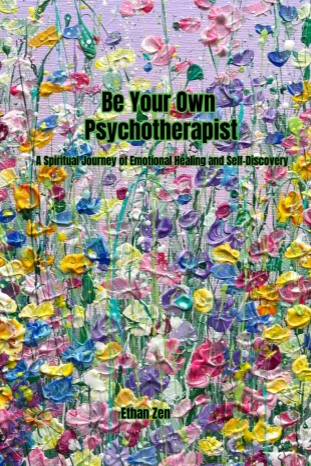The Path to Inner Peace: Emotional Awareness
The purpose of meditation is not to eliminate emotions from our daily lives, but to cultivate awareness and composure in the face of emotions. Emotions are a natural part of the human experience, and meditation helps us learn to coexist with them rather than be controlled by them.
Meditation serves as a practice ground where you can focus on observing and understanding your emotions. By dedicating time each day to sit quietly and meditate, you give yourself an opportunity to “check in” on your emotions. During meditation, you can focus on your breathing, emotional shifts, bodily sensations, and thoughts—these are all elements of emotional awareness.
Five Aspects of Emotional Awareness
1.Recognizing Emotions
Recognizing emotions is the first step in emotional awareness. In this process, you focus on your current emotional state. Whether you feel anger, sadness, anxiety, or joy, carefully observe and label these emotions. By naming your emotions, you gain a clearer understanding of your inner state, which helps with emotional regulation.
For example, you can mentally tell yourself, “I feel angry right now” or “I feel happy.” This helps you more clearly identify your emotions.
- Summary: Recognizing emotions involves identifying and naming your feelings.
- Principle: By naming emotions, we can better understand our internal state, raising our emotional awareness and managing them more effectively.
- Practice: Find a quiet place, close your eyes, and focus on your inner self. Ask yourself, “How do I feel right now?” Try naming the emotion, such as anger, sadness, anxiety, or joy. Write these emotions down to help clarify your emotional state.

2.Accepting Emotions
Accepting emotions means acknowledging and embracing your feelings without judgment or trying to change them immediately. Emotions themselves are not inherently right or wrong—what matters is how we become aware of and respond to them. Accepting your emotions helps reduce inner conflict and stress, promoting mental well-being.
For instance, when you feel anxious, you can say to yourself, “I acknowledge that I’m anxious, and that’s a normal reaction.” This attitude of self-acceptance helps you face emotional fluctuations more calmly.
- Summary: Acceptance means acknowledging your emotions without judgment or immediate action.
- Principle: Accepting emotions reduces inner conflict and stress, helping to maintain mental well-being. Emotions aren’t good or bad; accepting them allows for a more peaceful emotional experience.
- Practice: Identify and name your emotions. Tell yourself, “I accept this emotion; it’s normal.” Avoid judging your emotions, such as labeling anger as “bad.” Give yourself time to allow your emotions to flow naturally.
3.Exploring the Source of Emotions
Exploring the source of your emotions is an important step in understanding why you’re feeling a certain way. You can ask yourself, “What triggered these emotions?” It might be a specific event, someone’s words, or your inner thought patterns. The goal is to identify the root cause of the emotion so you can handle it better.
For example, if you feel angry, reflect on recent events to see if anything made you feel unfairly treated.
- Summary: Exploring emotional sources helps you understand the cause of your feelings.
- Principle: By identifying the root cause of emotions, you can handle them more effectively and become more aware of your emotional responses in similar situations.
- Practice: When feeling emotional, pause and ask yourself, “What triggered this emotion?” Reflect on recent events and try to pinpoint the cause. Consider whether someone’s words or your thought patterns triggered the emotion. Record your findings to better understand the source of your feelings.

4.Observing Physical Reactions
Emotions often manifest in the body, so observing your physical reactions is an important aspect of emotional awareness. Pay attention to how your body reacts to emotions—muscle tension, increased heart rate, or shallow breathing. By observing these physical responses, you gain a more complete understanding of your emotional state, and you can learn to ease emotions by relaxing the body. For example, when feeling tense, take a few deep breaths and relax the tense areas.
- Summary: Observing physical reactions involves noting how emotions affect your body.
- Principle: Emotions often have physical manifestations. By noticing these reactions, you can better recognize and regulate your emotions.
- Practice: When experiencing emotions, close your eyes and focus on your body. Notice areas of tension, pain, or discomfort. Write down these physical reactions to understand how emotions affect the body. Use deep breathing or relaxation exercises to relieve tension.
5.Sitting with Your Emotions
Allow yourself to sit with your emotions for a while instead of rushing to change or avoid them. Observe how emotions shift and dissipate over time, which can help you better understand and regulate them. The key here is to be patient and gentle with yourself—rather than immediately trying to “fix” things, give yourself time to feel and understand.
For example, when you feel sad, give yourself time to process and express it, which can help the emotion naturally fade.
- Summary: Sitting with emotions means allowing yourself to stay with them for a while, observing how they evolve and dissipate.
- Principle: Giving yourself time to feel and understand emotions helps them naturally dissipate and reduces their negative impact.
- Practice: Acknowledge and accept your emotions without rushing to change them. Allow yourself to coexist with the emotions. Observe how they change and gradually fade. Give yourself time and space to feel and process these emotions.








